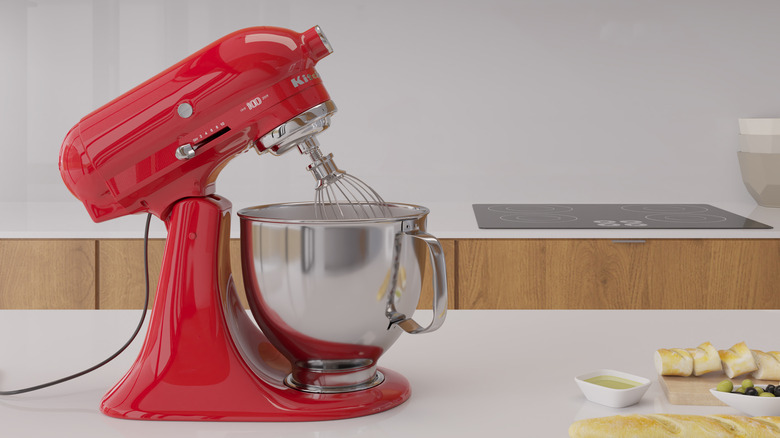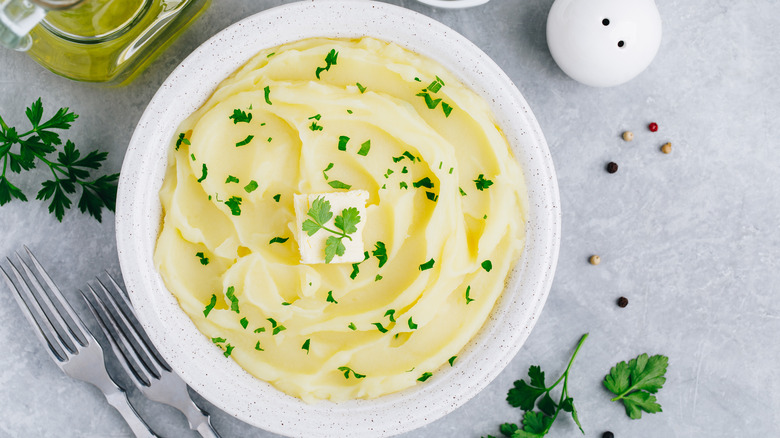When Should You Use A Stand Mixer To Make Mashed Potatoes?
What's not to love about mashed potatoes? Quite possibly the most iconic potato side dish of all time — right up there with potato salad and French fries — mashed potatoes, at their best, are creamy, buttery, and smooth, the perfect base to soak up the juices of roasts and the sauces of rich stews. Whether you love your mashed potatoes laced with roasted garlic, folded with kale, or topped with buttery lobster, there's a recipe out there for you.
When it comes to the actual mashing of the cubed, boiled potatoes, there are a few techniques commonly used by chefs and home cooks. Many of us reach for a simple hand masher to process the potatoes, but there are those who favor the fluffy potatoes produced by a ricer or food mill (via Serious Eats); Alternatively, some folks prefer to get the job done quickly using a food processor. Another kitchen hack for mashing potatoes is to turn to that kitchen workhouse, the stand mixer, and use the paddle attachment to work the spuds. But in which instances is this approach a good one?
Grab your stand mixer if you love dense, extra-creamy mashed potatoes
There seem to be an almost infinite number of recipes for mashed potatoes out there that vary not only in their ingredients and flavorings, but also in their texture, which can range from fluffy to smooth to chunky and everything in between. And for those who love super-creamy mashed potatoes that, as opposed to being fluffy, are actually quite dense and substantial, mashing the potatoes with a stand mixer fitted with its paddle attachment is a great idea.
According to Food52, which tested four different methods for mashing boiled potatoes — using a hand masher, a food mill, a food processor, and a stand mixer — the latter approach produces "dense, hefty, and uniform" mashed potatoes that are a substantial dish in their own right. According to the outlet, mixing the potatoes using a stand mixer can leave the spuds' starch molecules more intact, resulting in that dense texture and allowing the recipe's butter and dairy ingredients to better coat each molecule and produce a richer, more notable butter flavor in the dish.
The one precaution noted by Good Housekeeping? Make sure to turn off your mixer right when the potatoes go creamy, because if they continue to mix, the starch will become overworked and the dish will turn out gluey, instead.

